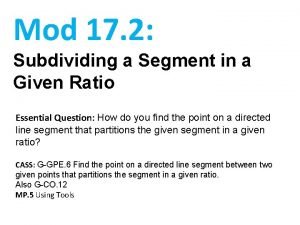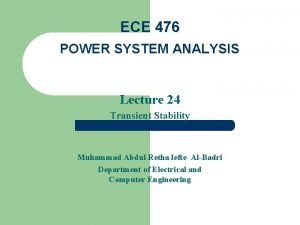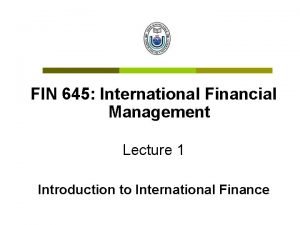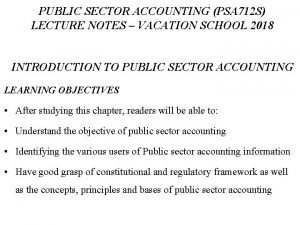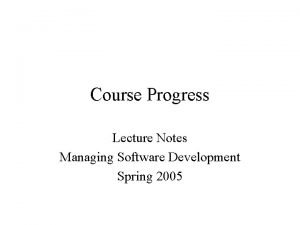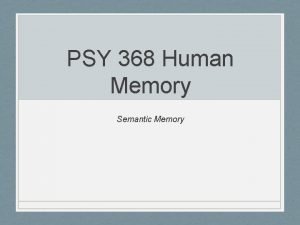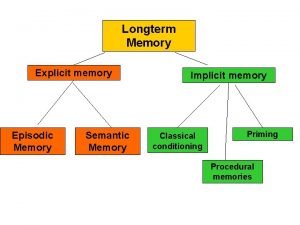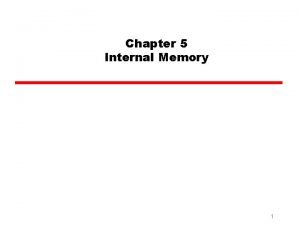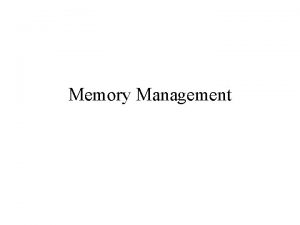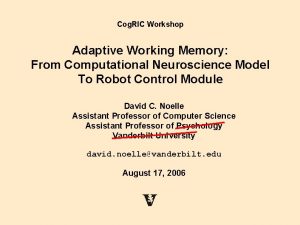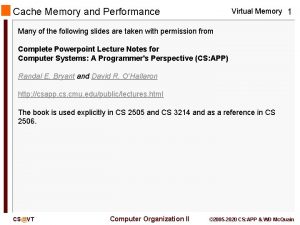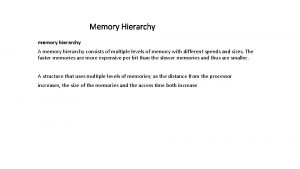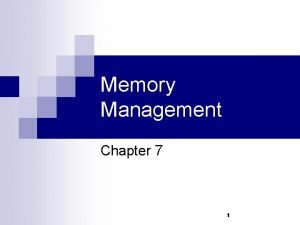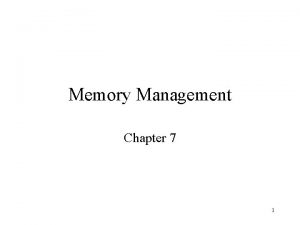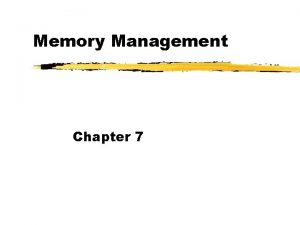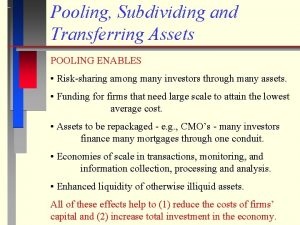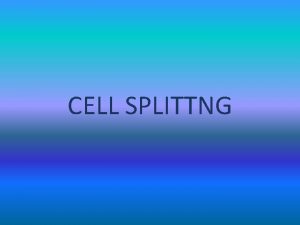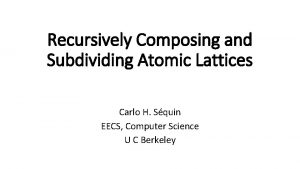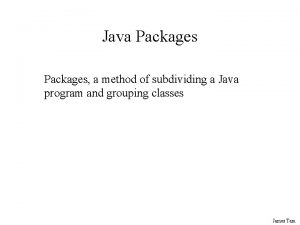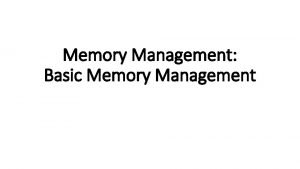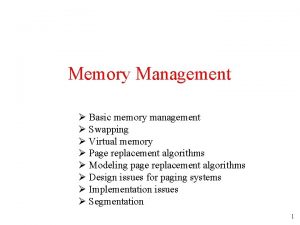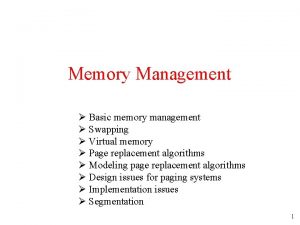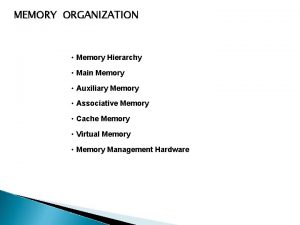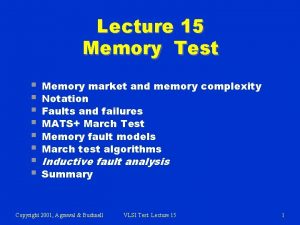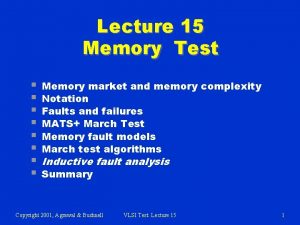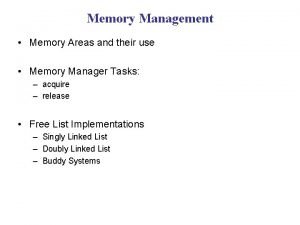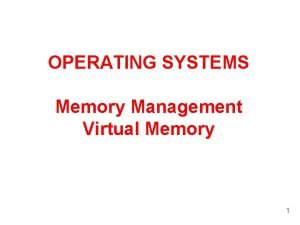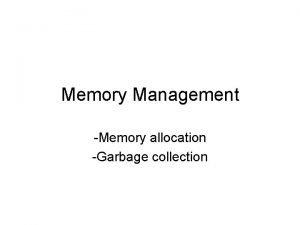Lecture 7 Memory Management Memory Management Subdividing memory

Lecture 7: Memory Management

Memory Management • Subdividing memory to accommodate multiple processes • Memory needs to be allocated efficiently to pack as many processes into memory as possible


Memory Management Requirements • Relocation – Programmer does not know where the program will be placed in memory when it is executed – While the program is executing, it may be swapped to disk and returned to main memory at a different location (relocated) – Memory references in the code must be translated to actual physical memory address

Memory Management Requirements • Protection – Processes should not be able to reference memory locations in another process without permission – Impossible to check absolute addresses in programs since the program could be relocated – Must be checked during execution – Operating system cannot anticipate all of the memory references a program will make

Memory Management Requirements • Sharing – Allow several processes to access the same portion of memory – Processes executing the same program can access the same copy of the code • it is more efficient than allocating private copies

Memory Management Requirements • Logical Organization – Programs are written in modules – Modules can be written and compiled independently – Different degrees of protection given to modules (read-only, execute-only) – Share modules

Memory Management Requirements • Physical Organization – Memory available for a program plus its data may be insufficient • Overlaying allows various modules to be assigned the same region of memory – Programmer does not know how much space will be available

Fixed Partitioning • Equal-size partitions – any process whose size is less than or equal to the partition size can be loaded into an available partition – if all partitions are full, the operating system can swap a process out of a partition – a program may not fit in a partition. The programmer must design the program with overlays

Fixed Partitioning • Main memory use is inefficient. Any program, no matter how small, occupies an entire partition. This is called internal fragmentation.


Placement Algorithm with Partitions • Equal-size partitions – because all partitions are of equal size, it does not matter which partition is used • Unequal-size partitions – can assign each process to the smallest partition within which it will fit – queue for each partition – processes are assigned to minimize wasted memory within a partition


Dynamic Partitioning • Partitions are of variable length and number • Process is allocated exactly as much memory as required • Eventually get holes in the memory. This is called external fragmentation • Must use compaction to shift processes so they are contiguously allocated and all free memory is in one block



Dynamic Partitioning Placement Algorithm • Operating system must decide which free block to allocate to a process • Best-fit algorithm – Chooses the block that is closest in size to the request – Worst performer overall – Since smallest block is found for process, the smallest amount of fragmentation is left and memory compaction must be done more often

Dynamic Partitioning Placement Algorithm • First-fit algorithm – Fastest – May have many process loaded in the front end of memory that must be searched over when trying to find a free block

Dynamic Partitioning Placement Algorithm • Next-fit – More often allocate a block of memory at the end of memory where the largest block is found – The largest block of memory is broken up into smaller blocks – Compaction is required to obtain a large block at the end of memory


Buddy System • Entire space available is treated as a single block of 2 U • If a request of size s such that 2 U-1 < s <= 2 U, entire block is allocated • Otherwise block is split into two equal buddies • The process continues until the smallest block greater than or equal to s is generated



Relocation • When program loaded into memory, the actual (absolute) memory locations are determined • A process may occupy different partitions, which means different absolute memory locations during execution (from swapping) • Compaction will also cause a program to occupy a different partition, which means different absolute memory locations

Addresses • Logical – reference to a memory location independent of the current mapping of data to memory – translation must be made to the physical address • Relative – address expressed as a location relative to some known point • Physical – the absolute address or actual location in main memory


Registers Used during Execution • Base register – starting address for the process • Bounds register – ending location of the process • These values are set when the process is loaded and when the process is swapped in

Registers Used during Execution • The value of the base register is added to a relative address to produce an absolute address • The resulting address is compared with the value in the bounds register • If the address is not within bounds, an interrupt is generated to the operating system

Paging • Partition memory into small equal-size chunks and divide each process into the same size chunks • The chunks of a process are called pages and chunks of memory are called frames • Operating system maintains a page table for each process – contains the frame location for each page in the process – memory address consist of a page number and offset within the page



Page Tables for Example

Segmentation • All segments of all programs do not have to be of the same length • There is a maximum segment length • Addressing consist of two parts - a segment number and an offset • Since segments are not equal, segmentation is similar to dynamic partitioning
- Slides: 33
